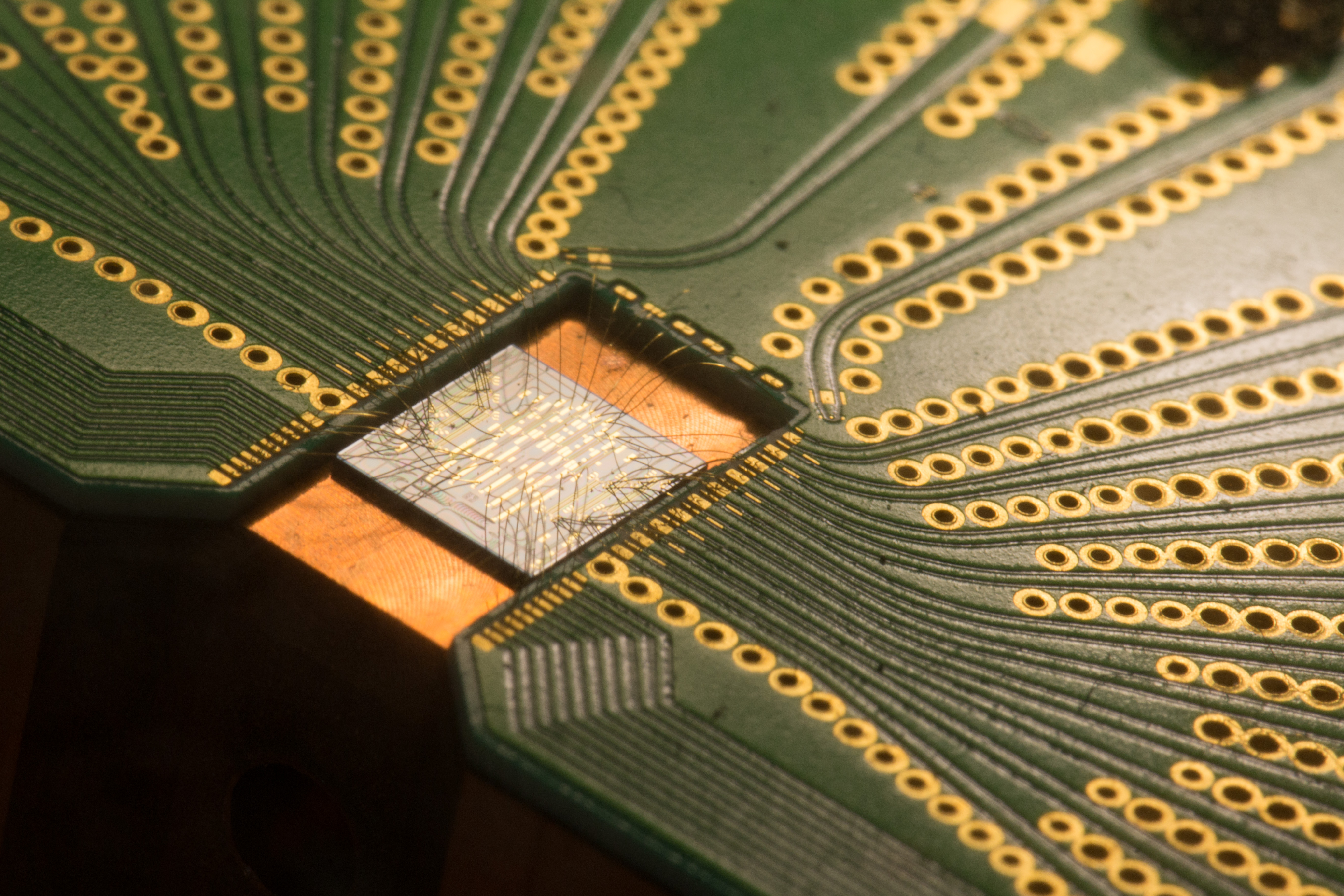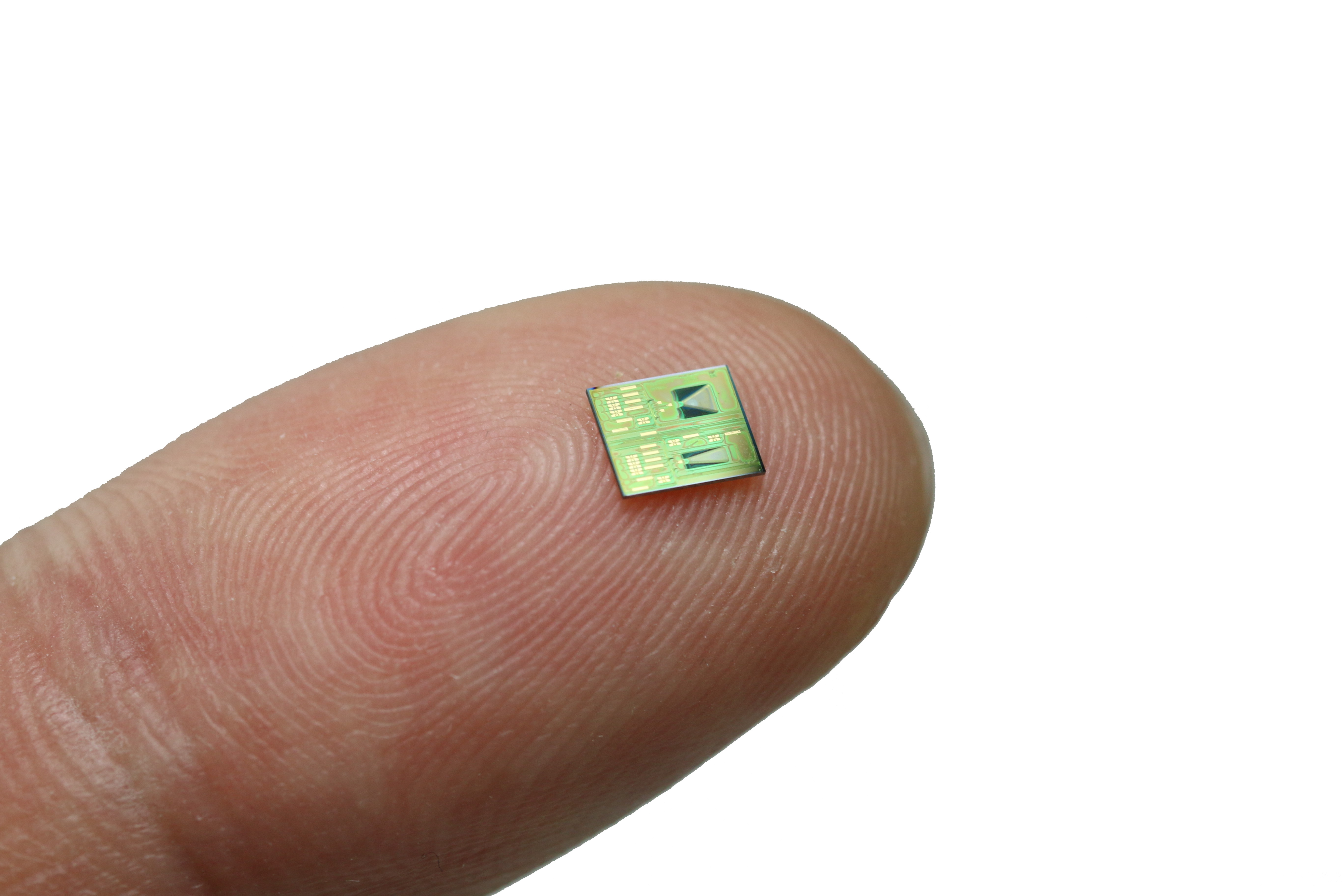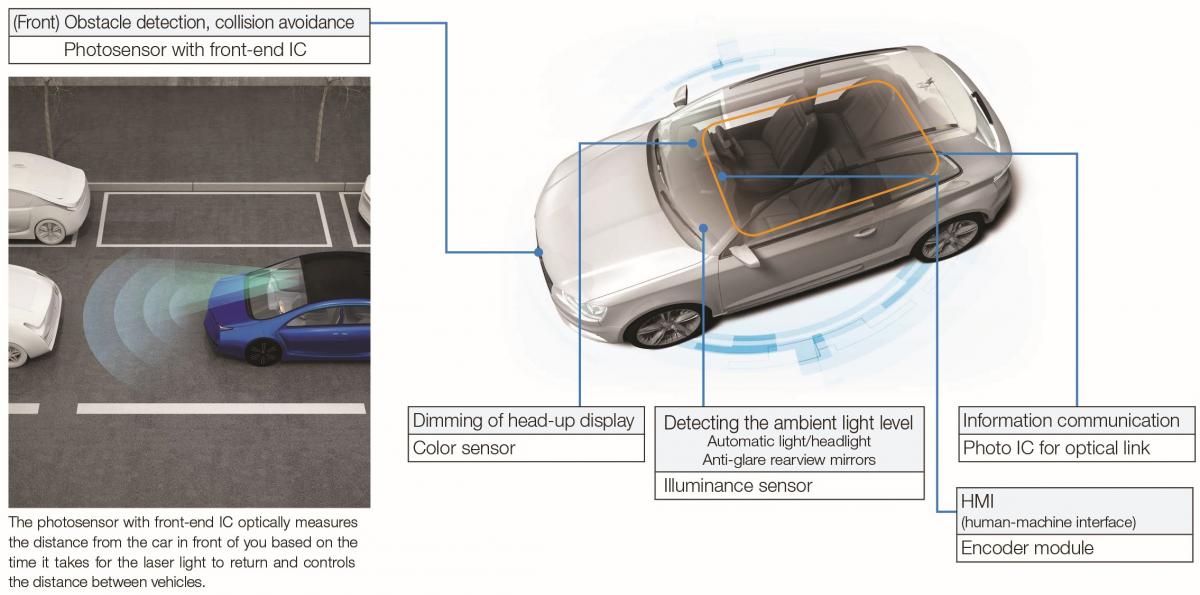EO: Which industries are driving the development and integration of PIC technology?
ER: The main industry dominating the drive to develop and integrate PIC technology is optical data telecoms. If you look at the top 15 companies in optical data telecoms globally – mostly in the US, China and Japan – they’re all pursuing PIC technology.
This is because it’s the industry with the most pressing need to reduce energy consumption, increase bandwidth and data speeds, and continue Moore’s Law. PICs can also be produced on the wafer scale, which is absolutely key to realising cost efficiency – another key objective in optical data telecoms.
While not quite on the same level as optical data telecoms, the automotive industry is also a key industry driving the development and integration of PICs. For example, the vision systems featuring lidar, cameras and other sensors that guide autonomous vehicles, as well as the communication systems that are built within these vehicles, can all make use of PIC technology.
So these are, in my opinion, the two most important industries for PICs. They will create a ‘pipe-cleaning’ effect in the supply chain, with their high-volume demand driving down the cost of PIC production, integration and packaging. This in turn will help open up new markets and applications – e.g. sensing applications in medicine, food production and consumer electronics.
EO: Will a dedicated supply chain be required to manufacture and integrate PICs?
ER: Yes and no. If you look at the PIC supply chain, it’s comparable to that of semiconductors. Foundries around the world could, via their existing CMOS production lines, use silicon as a base on which to build PICs. However, these lines would need to be adapted somewhat in order to integrate photonics functionality – via lasers and waveguides, etc. This would involve these firms with existing CMOS libraries connecting to the design libraries and PDKs of firms making the optical machines/engines that are required for photonics integration.
So this is one possible path – integrating photonics functionalities into existing CMOS lines, rather than building entirely new lines dedicated to PIC manufacture. However, at the same time, there are motivations to build such dedicated lines. This is because integrating the photonics functionality into existing CMOS lines could actually reduce their current yield and efficiency. The big foundries have come such a long way and can now achieve exceptionally high yields exceeding 99% on their lines. It’s likely that they won’t want to jeopardise that.

Seamless, low-loss and cost-efficient integration of PICs with electronics will be challenging. (Image: Bart van Overbeeke)
However, building the PICs is only one part of the supply chain. The next challenge will be integrating them with electronics in a very cost-efficient, automated and seamless way with very low losses. Regardless of the headway made in PIC manufacturing, if the cost of integrating and packaging PICs isn’t also brought down, then the technology will never penetrate its target markets. Rapid developments in both front- and back-end PIC integration and packaging will therefore take place in the coming years – there’s huge interest from all over the world in that part of the supply chain.
In addition, back-end integration – and packaging in particular – is going to be increasingly taken into account in PIC design in the future. This will be key if PICs are to become a standardised and mature technology. This will likely have consequences for the startups and scale-ups working in this space, as a lot of them are vertically integrated and therefore do their own highly advanced and sophisticated back-end integration and packaging. However, if they want to get into volume, there will have to be consolidation elsewhere in the back-end market – as there will also be consolidation in the front-end market with respect to the manufacturing of PICs. But that’s a normal, expected development, as this is what was seen over the years for the semiconductor market.
EO: How is PIC development being supported throughout Europe?
ER: PICs and photonics integration in general has been identified by the European Commission as an essential enabling technology due it being required across so many different areas – data telecoms, sensing, quantum computing, etc. We cannot ignore that and should be able to manufacture the technology ourselves. And so the development, integration and commercialisation of PICs will be supported as part of the European Chips Act. How this will end up in actual funding is the next big question, because PICs will be in competition with traditional semiconductor technologies that also need funding.
There’s also a current callout for advanced PIC pilot lines, which the European Commission is actively supporting through projects such as PIXAPP, InPulse, OIP4NWE and JePPIX, to name a few. These pilot lines will be looking to take PICs beyond university tests and really start to produce them in the mid-volumes required to get them into real applications.
There is also a lot of support being given by individual countries. For example, the Netherlands is investing a lot into PICs. Eight years ago, PhotonDelta started out with €4m funding, then four years later we had €240m. Now we have €1.1bn, with the Dutch Government having contributed more than €600m of this since the start. The next step is to make an appeal on the money that will be allocated through the European Chips Act for the next stage of scaling. We could see this potentially doubling the €600m already contributed by the Dutch Government. Spain and Germany are also moving very fast in the PIC field, and so in Europe we are seeing strong interest all around. It’s not just a one-night stand, it’s a dedicated, continuous interest in this technology.

PICs can be deployed in a wide range of applications and technologies, ranging from data telecoms to optical computing and 3D sensing. (Image: Bart van Overbeeke)
EO: Where does Europe stand with the rest of the world in PIC development?
ER: This comes down to the applications being focused on in each region. For example, if you look at the top 15 companies in data telecoms that are pursuing PICs, then they’re mostly in the US and China, with the exception of Nokia in Europe. However, if you look at other PIC-enabled fields – lidar, biosensing, optical computing for machine learning, reprogrammable PICs, lab-on-chip technologies, etc – then you see many more European companies and startups leading in those applications.
Over in the US, with PICs being so centred around data telecoms, development funding is very customer-driven, with giants such as Google, Facebook and Intel all investing in the technology. In addition, government agencies such as DARPA are also pushing hard for PIC technologies, but more for sensing rather than data telecoms.
In Europe, on the other hand, PIC development funding is not so much driven by customers, but more by the need for innovation. What I mean by this is that in data telecoms, the same challenges that existed 20 years ago – increasing bandwidth and speed while reducing energy footprint – still exist today. While a lot of innovation is indeed taking place here, it is always targeting these key objectives for the same application. In the sensing space, the market is more scattered as there are many more types of application – with more and more emerging each year – and therefore a different kind of innovation is required. This innovation is being facilitated by EU subsidies and programmes, rather than investments from big customers.
EO: Which application do you see the most volume coming from in the future?
ER: While sensing is much more scattered in terms of the markets it serves, I believe that ultimately it’s going to create the biggest volume. As I mentioned earlier, the automotive industry will be a huge adopter of PIC-based 3D sensing technologies, as will the many Industry 4.0 applications already deploying them – this will definitely drive volume to exceptional levels over the next five years or so.
--
Sponsored: Advanced photo ICs for comfort and safety in vehicles
In today’s cars, many comfort functions support drivers all over the world on their journeys. Working in the background, invisible to most, they provide more comfort and safety no matter the driving or weather conditions. In addition to our comfort, EU regulations are becoming stricter with new 2022 regulations* for advanced safety systems aiming to improve the safety of both occupants and vulnerable road users. Ultimately, this will help achieve the EU’s long-term goal of moving close to zero fatalities and serious injuries by 2050.
Hamamatsu Photonics, a 70-year expert in optoelectronic technology, develops high-quality optical sensors for the automotive industry. Knowledgeable about many of the challenges faced by this market, it offers diverse advanced technologies to assist in safe, reliable, green, and comfortable car driving. Out of the range of automotive devices offered, photo ICs (integrated circuits) are a key component that come in many shapes and forms, but prove essential for many light-sensing automotive applications.
Photo ICs are intelligent optical sensors with diverse functions that integrate a photodiode with a signal processing IC in the same package. Hamamatsu designs all types based on the mounting environment and application needs. These compact and lightweight devices can serve, be adapted or integrated to function as illuminance sensors, colour sensors, encoder modules, photo sensors with front-end IC, and photo ICs for optical links.

To detect the ambient light level, illuminance sensors are ideal. These sensors are built for excellent linearity and a large dynamic range with five orders of magnitude, in order to detect low light levels in the dark, as well as bright daylight. Smart auto headlights respond to the ambient light level to automatically turn the headlights of a car on or off. An illuminance sensor mounted near the dashboard monitors the brightness outside the car and turns on the parking lights or headlights when the brightness drops below a certain light level.
Auto anti-glare rearview mirrors also have an illuminance sensor that automatically adjusts the mirror reflectance when it detects intense light (high-beam headlights) from a rear-approaching car at night, so that the driver is not dazzled by the headlight glare.
Life in colour
Also providing comfort, colour sensors help give information on brightness or colour functions for displays, dashboard and interior lighting, for example dimming of the head-up display. Interior illumination according to certain situations or moods is one of the big topics for car manufacturers today. Scientific studies show that light influences mood and the condition of the driver. Adjustment of brightness or colour can support the driver to remain attentive while driving. Special filters are used to achieve sensitivity close to the human eye. RGB sensors improve the categorisation of the measured light, in order to distinguish the different times of the day, weather conditions, or between natural and artificial light sources. Also, encoder modules can be found in the human-machine interface, which is the now indispensable equipment and software that help us operate the steering wheel and instrument panel.
One of the most promising developments in recent years has been the use of lidar (light detection and ranging) systems, an optical method aimed at measuring distances and speed. It measures distance by emitting laser light to a target and detecting its reflection with a photosensor. It is increasingly important in today’s safety measures, as it helps us detect obstacles and avoid collisions.
Photo sensors with front-end ICs intervene by optically measuring the distance from the car in front and controlling the distance between vehicles, and are used, as many of the products offered by Hamamatsu, for time-of-flight (TOF) and frequency-modulated-continuous-wave (FMCW) lidar requirements.
Finally, tackling environmental challenges is also at the forefront of the automotive industry. Photo ICs for optical links can be useful to help monitor and control the current, voltage, temperature, and functionality of each individual battery cell in order to assure the best reliability and performance of the battery pack. Additionally, multimedia information including video and audio data we enjoy in a car is sent via a wire harness or optical fibre cable between various devices such as a display, in-car camera, audio player, and speakers. Light emitter and receiver photo ICs are used for such information exchange through optical links using optical fibres. EO
Further information
From design to manufacturing, Hamamatsu delivers standard and customised solutions with high-volume manufacturing capabilities. Please contact Hamamatsu Photonics for all your automotive needs now and in the future.
References
*Road safety: Commission welcomes agreement on new EU rules to help save lives (europa.eu)


